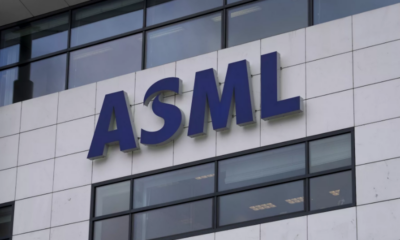
Chicago’s Flourishing Ecosystem for Startups
In recent years, Chicago has emerged as a dynamic hub for startups, offering an enticing environment for entrepreneurs to thrive and innovate. While Silicon Valley has long been hailed as the epitome of startup success, Chicago’s unique blend of advantages sets it apart as an increasingly attractive destination for ambitious founders.
Diversity and Talent Pool
One of Chicago’s greatest strengths lies in its diverse talent pool. The city boasts a rich tapestry of professionals from various backgrounds and industries, providing startups with access to a broad spectrum of skills and perspectives. From finance to technology, marketing to healthcare, Chicago offers a wealth of expertise crucial for startups to scale and succeed.
Furthermore, the city’s top-tier universities, including the University of Chicago, Northwestern University, and the Illinois Institute of Technology, continuously churn out talented graduates eager to make their mark in the entrepreneurial landscape. This influx of fresh talent injects new ideas and energy into the startup ecosystem, driving innovation forward.
Cost-Effective Environment
Compared to its coastal counterparts, Chicago offers a more affordable cost of living and business operations. The relatively lower real estate prices, coupled with competitive wages, allow startups to stretch their capital further, enabling them to invest more in growth and development. This cost-effectiveness makes Chicago an attractive option for startups looking to establish a solid foundation without burning through their resources prematurely.
Supportive Infrastructure
Chicago boasts a robust support infrastructure tailored to the needs of startups at every stage of their journey. The city is home to numerous startup incubators, accelerators, and co-working spaces, providing invaluable resources, mentorship, and networking opportunities. Organizations like 1871, mHUB, and TechNexus offer not only physical workspaces but also access to funding, educational programs, and a vibrant community of like-minded entrepreneurs.

Moreover, Chicago’s well-established network of investors, including venture capital firms, angel investors, and corporate partners, actively seek out promising startups to fuel their growth. This access to capital, combined with the city’s supportive ecosystem, accelerates the trajectory of startups, propelling them toward success.
Thriving Industries
Chicago’s diverse economy encompasses a wide range of industries, each ripe with opportunities for startups to thrive. From finance and manufacturing to healthcare and logistics, the city serves as a fertile ground for innovation across multiple sectors. Additionally, Chicago’s strategic location at the heart of the country makes it an ideal testing ground for startups seeking to scale their operations nationally.
Furthermore, the city’s deep-rooted legacy in sectors like transportation and food provides startups with a rich heritage to draw inspiration from while forging new paths forward. This blend of tradition and innovation fosters a dynamic ecosystem where startups can leverage existing resources while pushing the boundaries of possibility.
Collaborative Culture
One of Chicago’s most compelling attributes is its collaborative culture. Unlike the cutthroat competition often associated with other startup hubs, Chicago fosters a spirit of camaraderie and cooperation among its entrepreneurial community. Founders, investors, and industry experts readily share insights, offer support, and collaborate on projects, creating a synergistic environment conducive to success.
Chicago’s rise as a premier destination for startups is no mere coincidence but a testament to the city’s myriad advantages. From its diverse talent pool and cost-effective environment to its supportive infrastructure and thriving industries, Chicago provides entrepreneurs with the essential ingredients for building and scaling successful ventures. As the startup ecosystem continues to flourish, Chicago solidifies its position as a beacon of innovation and opportunity in the ever-evolving landscape of entrepreneurship.
Business
Surging Energy Prices Raise Concerns Over Eurozone’s Economic Outlook
Natural gas and crude oil prices have surged sharply in January, driven by rising demand and new U.S. sanctions on Russia. The increase in energy prices poses significant risks to the eurozone’s inflation outlook and raises concerns about a potential stagflationary scenario for the region.
Benchmark natural gas futures at NYMEX spiked to $4.37 per million British thermal units (MMBtu), the highest level since December 2022, before retreating slightly on Monday. Crude oil futures, including WTI and Brent, also rose to their highest levels since August 2024, with WTI up by 17% and Brent climbing 14% since early December. The price hike in natural gas is largely attributed to soaring demand due to cold weather in the northern hemisphere, while the surge in crude oil prices follows new U.S. sanctions on Russian oil exports.
Natural gas prices have more than doubled since October 2024, rising from under $2 per MMBtu to just under $4. According to the U.S. Energy Information Administration, natural gas futures for delivery at the Title Transfer Facility (TTF) in the Netherlands averaged $14.55 per MMBtu for the week ending January 8, a 27% increase compared to the same period last year. The surge in oil prices also stems from the continued decline in U.S. oil inventories, which dropped for the seventh consecutive week by January 5, alongside sanctions imposed on Russian oil producers like Gazprom Neft and Surgutneftegaz.
The rising energy prices come at a precarious time for the eurozone, which is already facing economic challenges amid political uncertainties. Experts warn that higher energy costs could exacerbate inflationary pressures and hinder economic growth, pushing the region toward stagflation. Stagflation refers to an economy experiencing high inflation, stagnant growth, and rising unemployment—an increasingly plausible scenario for the eurozone.
Kyle Rodda, a senior market analyst at Compital.com, said, “If energy prices continue to rise, there is a risk of a stagflationary mix in Europe, which is struggling with energy policy and weak growth.” This mirrors the challenges the eurozone faced in 2022 when Russia’s invasion of Ukraine sent energy prices soaring. The European Central Bank (ECB) will likely be tasked with balancing inflation and economic growth, a difficult feat as energy prices remain volatile.
In November 2024, S&P Global projected eurozone GDP growth of just 0.8% in 2024 and 1.2% in 2025, contingent on falling energy prices and ECB rate cuts. However, a resurgence in energy prices could undermine these projections.
The situation may also be influenced by the incoming U.S. administration. President-elect Donald Trump has expressed intentions to broker a truce between Russia and Ukraine, potentially leading to a reversal of some sanctions on Russian energy exports. If such negotiations succeed, it could have a significant impact on global energy markets, though experts believe the chances of this happening remain low.
Business
Spain Proposes 100% Tax on Non-EU Property Buyers to Address Housing Crisis
Spain Proposes 100% Tax on Non-EU Property Buyers to Address Housing Crisis
Spain’s Prime Minister Pedro Sánchez has unveiled a bold plan to impose a tax of up to 100% on properties purchased by non-residents from outside the European Union, including the UK. The measure, announced on Monday, aims to combat the nation’s growing housing crisis and prioritize affordable housing for residents.
Speaking at an economic forum in Madrid, Sánchez described the proposal as “unprecedented” and necessary to prevent Spain from becoming a society divided into “rich landlords and poor tenants.”
Housing Crisis and Foreign Buyers
In 2023, non-EU buyers purchased 27,000 properties in Spain, Sánchez noted, adding that many of these purchases were made for profit rather than residency. He argued that this practice exacerbates the housing shortage and contributes to unaffordable prices.
“This is something we cannot allow in the current context of scarcity,” Sánchez said, emphasizing that the move is designed to ensure more homes are available to Spanish residents.
Non-residents are defined in Spain as those who live in the country for fewer than 183 days a year. Currently, they pay 6-10% in property taxes depending on the region and the type of property. The new proposal would dramatically increase this tax burden, aligning Spain with countries like Denmark and Canada, which have introduced similar measures.
The Spanish government has not yet provided details on the implementation timeline or the specific mechanics of the tax. Sánchez’s administration has pledged to finalize the plan “after careful study” and submit it to parliament, where legislative passage could face challenges.
Mixed Reactions from Prospective Buyers
The proposal has already caused concern among prospective foreign buyers, particularly in the UK. Michele Hayes, a 59-year-old from Manchester, had been considering purchasing a retirement home near Alicante. However, the uncertainty surrounding the tax has given her pause.
“We could buy quickly before the tax is introduced, but selling later could become difficult,” Hayes said. “I understand the housing issue, but I wanted to contribute to the local economy.”
Others, like Martin Craven from London, are reconsidering their plans entirely. “I’ll be looking at Cyprus instead,” he said, citing concerns about potential retrospective taxes.
Additional Housing Measures
The tax proposal is part of a broader housing reform package aimed at improving affordability. Other measures include tax breaks for landlords who offer affordable rents, the creation of a public housing body to manage 3,000 properties, and stricter regulations on short-term tourist rentals.
“It isn’t fair that those who own multiple apartments as short-term rentals pay less tax than hotels,” Sánchez said.
While the plan underscores Spain’s commitment to addressing its housing crisis, it remains to be seen how the measures will impact the property market and foreign investment.
Business
ASML Shares Surge to Start 2025, Outperforming US Semiconductor Peers Amid Investor Shift to Europe
ASML has made a strong start to 2025, with its shares rising over 7% since the beginning of the year, outpacing its US semiconductor counterparts and signaling a potential shift in investor sentiment towards European stocks. The rally in ASML shares comes at a time when US markets are grappling with a broad selloff, partially fueled by growing concerns ahead of Donald Trump’s upcoming inauguration.
European Markets Gain Momentum
ASML’s impressive performance reflects the broader positive trend in European stock markets, which have begun the year on a high note. All major European benchmarks are in the green, with Germany’s DAX leading the way, up 1.54% year-to-date. This contrasts sharply with negative returns in US equities, which have stalled since late December following the Federal Reserve’s hawkish rate stance. Concerns over Trump’s promises to raise tariffs on global imports have added to inflation fears in the US, contributing to a sharp rise in government bond yields. This has led to declines in major US stock indices, with the S&P 500, Dow Jones Industrial Average, and Nasdaq Composite all posting negative performances to start 2025.
ASML’s Dominance in Semiconductor Equipment
While the broader rally in European equities may have supported ASML’s rise, the company’s near-monopoly status in the semiconductor equipment market is a significant factor behind its outperformance. ASML is the world’s exclusive manufacturer of extreme ultraviolet lithography (EUV) systems, which are crucial for producing the most advanced chips, including those used in AI technologies. With the ongoing demand for AI chips, analysts have positioned ASML as one of the top picks in the semiconductor sector.
Earnings per share for ASML are expected to grow by 26% in 2025, after an estimated decline of 4% in 2024. The company remains optimistic about long-term prospects, forecasting revenues between €44 billion and €60 billion by 2030, with gross margins ranging from 56% to 60%.
Trade Tensions and Export Restrictions
However, ASML’s outlook is not without challenges. Trade tensions between the US and China continue to pose risks, particularly with the US government preparing new export restrictions targeting AI chips. These restrictions could affect ASML’s sales to China, which has been a major market for the company. ASML recently canceled shipments of certain chip-making machines to China, following new export control regulations from both the US and Dutch governments.
Despite these challenges, ASML has expressed confidence that the impact on its business will be limited. The company maintains that the outlook for 2025 remains positive, even as it lowers expectations for China’s contribution to its revenues, projecting it will drop to around 20% from nearly half in previous years.
Overall, ASML’s strong performance to begin 2025 and its leading position in the semiconductor industry highlight its resilience amid global trade uncertainties.
-

 Travel9 months ago
Travel9 months agoEmbracing Solo Travel to Unlock Opportunities for Adventure and Growth
-

 Politics10 months ago
Politics10 months agoSix Best Things Done by Donald Trump as President
-

 Education10 months ago
Education10 months agoExlplore the Top Universities in the United States for Computer Science Education?
-

 Technology9 months ago
Technology9 months agoRevolutionizing Healthcare Training with Latest Technologies
-

 Health9 months ago
Health9 months agoRise of Liposuction: A Minimally Invasive Solution for Body Contouring
-

 Business10 months ago
Business10 months agoThriving Startup Hubs: Best Cities in the USA for Entrepreneurship
-

 Travel9 months ago
Travel9 months agoWhere to Move? America’s Top Ten Most Affordable Cities
-

 Health9 months ago
Health9 months agoDigestive Power of taking Mint Tea after Meals















